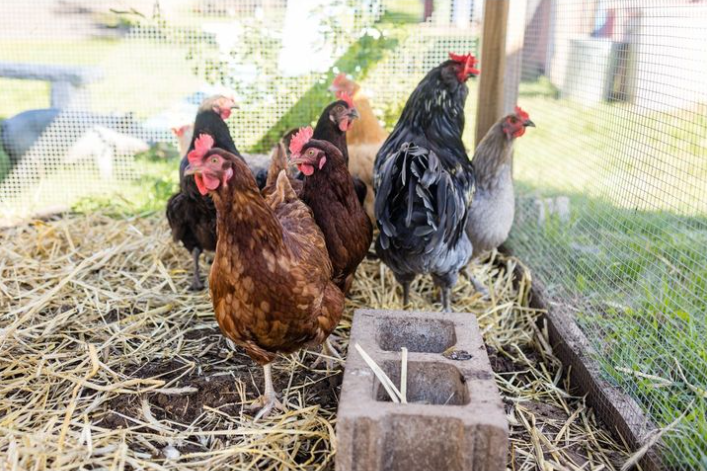Blueberry, buckwheat or wildflower - which is your flavor of choice? No wonder honeybees do their little happy dance to let the rest of the hive know which flowers give the juiciest nectar - we would have been just as thrilled to find such unique and tasty flavors of the tasty amber treasure!
What is Honey
Honey is a sweet liquid created by honeybees who collect the sugary nectar of flowers from their surroundings. They retreat to their hive to eat, digest, and then regurgitate the liquid, which they store in small waxy units they build, called honeycombs. They flap their wings to fan it and evaporate the water. The resultant honey is viscous and sticky and serves as their winter food.
To create a pound of pure honey, bees will need to pollinate two million flowers! However, it's so cool that a honeybee needs only a single ounce of honey to fuel its flight across the world!
Early Uses of Honey
Honey has always been held in the highest regard, through the centuries and across continents. It has been used in cooking, beauty treatments, and as topical medicine. Across Asia, Europe, Australia, and Africa, Cave art depicts the discovery of bees by humans and the honey-making process to be around 20,000 years old. Archaeologists have unearthed honey from ancient Egyptian tombs, which are not just still edible but delicious! Honey was used as currency in 11th century Germany. Their lords forced peasants to pay their dues in honey which was popularly used to sweeten beer. Ancient Chinese and Greeks used raw honey mixed with olive oil and turmeric as skin and hair nourishment.
Types of Honey
The flavor, scent, color, and nutritional quality of honey vary based on the types of flowers chosen by the bees. There are more than 300 unique varieties of honey found in the US.
Darker honey like buckwheat honey has an intense and bitter taste and a higher quantity of antioxidants. Buckwheat honey has a malty taste and is scrumptious when used in marinades.
Light honey varieties include clover honey and acacia honey. Clover honey has a sweet and floral taste with a slightly sour aftertaste and is popularly used as a dressing and in baking.
Pasteurized, ultra-filtered, or processed honey is honey that has been altered to increase its shelf life by using preservatives like corn syrup and other sweeteners.
Raw or pure honey, on the other hand, is high in antioxidants as it arrives straight from the hive. It appears foggy owing to pollen and enzymes within it, which are not treated with heat.Good quality honey is thick, not very sticky, and with a distinct scent.
Raw Honey and its Varied Benefits
Raw honey has all nutrients essential to sustain life, including water, amino acids, enzymes, pollen, vitamins, minerals, and antioxidants. It provides antioxidants, including flavonoids which help fight inflammation, promotes skin elasticity and good eyesight, and reduce the risk of heart attacks and certain cancers.
Besides its antibacterial and antifungal properties, honey helps soothe wounds and burns, ulcers, skin issues like psoriasis and improves gut microbial balance.
Need a home remedy to soothe sore throats and coughs? Reach for your stock of pure honey.
Raw honey can help treat seasonal allergies and hay fever as it contains local pollen, which act as a vaccine and builds immunity to the local allergens. A teaspoon of local honey a day taken before the allergy season begins can largely help combat the allergy.
For a taste of yummy pure, raw honey, do pop over to our farm (more information at https://farmerjoesgardens.com/pantry/honey/honey-pure.html).
We appoint a pollinator during the summer to keep bees on our vegetable fields, and then purchase the delectable honey produced. It is only heated up to the temperature that bee wings would and be taken out of the hive without damage.
Honey Used in Cooking and Baking
You can get creative with the way you use honey in your daily diet. Drizzle a bit in your tea or in your bowl of oats or yogurt. Raw honey is the perfect addition to dressings, sauces, and marinades.
In baking, as a general rule of thumb, substitute half cup of raw honey for every cup of sugar. For every cup of local honey being used, deduct quarter cup of other liquids from the bake recipe.
For recipes which use no other liquids besides honey, up the flour content by 2 tablespoons per cup of honey. Also, add around half teaspoon of baking soda to every cup of pure honey being used as it reduces the acidity level.
An important tip to avoid browning when whipping up honey infused recipes that originally call for sugar, is to decrease the oven temperature by about 25ºF.
The best part of cooking with honey is that you can play with so many flavors based on the type of honey you have at hand. Let your imagination run wild as you whip up unique baking treats for your family and friends with the indigenous raw honey.
We invite you to visit our farm for some delicious local honey. You can get a first-hand feel of our products when you stop at the farm stand or order online at https://farmerjoesgardens.com/pantry/honey/honey-pure.html.


